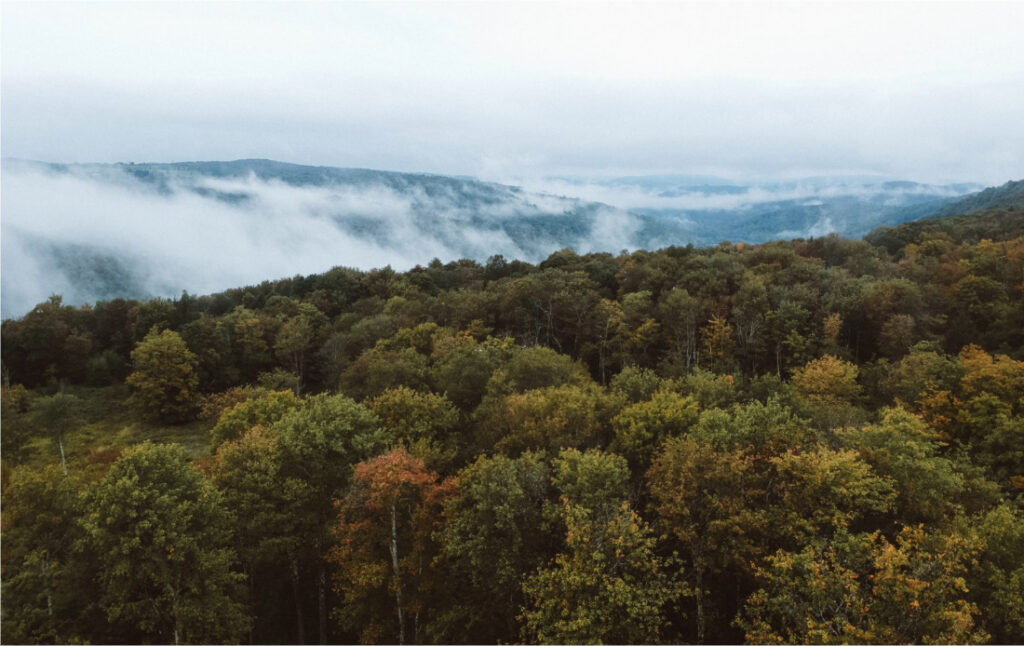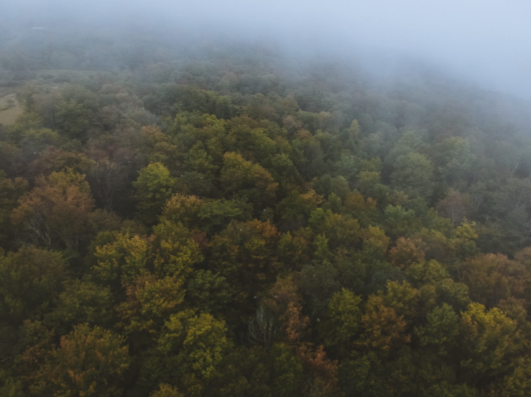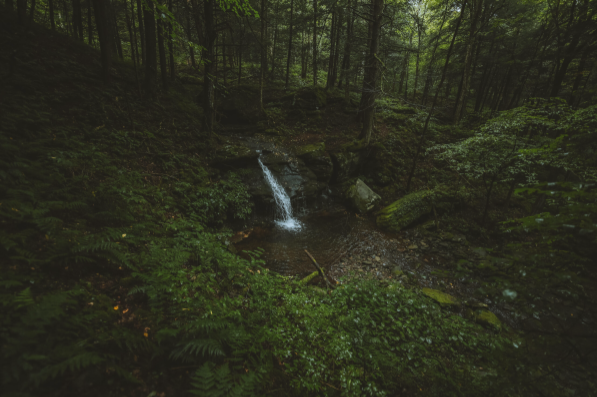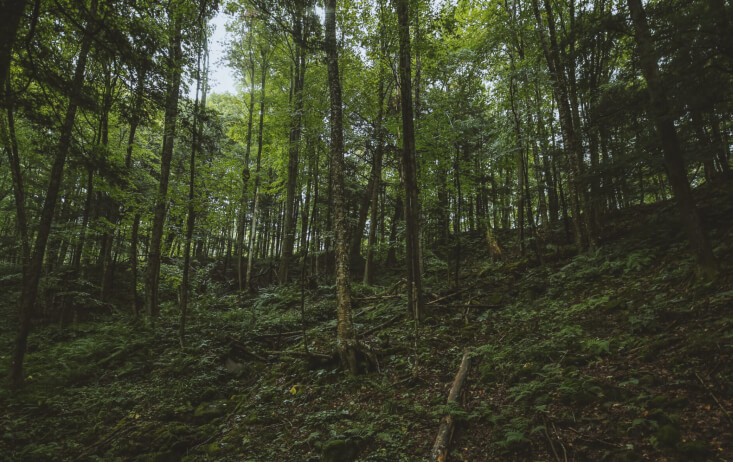Your neighbors at The Catskill Project will be not only other wonderful people. You will also share the site with thousands of beautiful trees, silent and wise sentries of the rolling and forever changing landscape.
THE LANDSCAPE NOW AND THEN
People live in and come to the Catskills for all sorts of reasons, and the love of trees is certainly one of them. With over 90% of the park’s area covered by them it is not unusual to stand at a lookout and marvel at the endless, rolling expanse of canopy, often without a trace of human activity. You see the iconic eastern hemlock and balsam fir among the evergreens, and a rich array of deciduous species such as several kinds of oak, cherry, ash, beech, maple and birch. Even if you don’t quite believe that trees communicate via intricate root systems, are able to send nutrients to individuals in need and warn each other against common threats, you cannot but be amazed by these majestic neighbors of ours (Q: what percentage of DNA do we share with trees? A: 50%)
Quite a thing to behold – but if you stood at that same lookout sometime late in the 19th century all you would see would be denuded, deforested hills. This was courtesy of an extensive tanning industry, based on stripping the bark of hemlocks, boiling it in nasty acid and treating cow hides, locally plentiful thanks to a robust dairy industry. Good for boots, coats and bags, not so good for local forests and rivers. The last hurrah of tanning was the First World War, with most American boots pounding the European theater originating in the Catskills. No more bark stripping after that, with other, more benign methods giving trees a break.

THE PARADISE NEEDS OUR HELP
The trees came back where they belonged, eventually further assisted by the decline of the dairy industry. With some of them over 100 years old now, parts our forests start to look like genuine old growth. Truly beautiful. But all is not quite well in paradise, with several parallel threats putting stress on our trees. And it turns out that home owners in The Catskill Project can help.
Perhaps the best known pest is the Emerald Ash Borer, a beetle originally from north-eastern Asia, currently spreading north through NY State, including the Catskills. As the name suggests it attacks ash trees, with 99% mortality rate: a healthy ash is gone within 10 years of being attacked. But there is hope. The 1% of trees that survive demonstrate a truly unique ability to kill the attacking larvae. Arborists call them “lingering ash trees”, and finding them is invaluable. Citizen scientists can get educated on how to spot them, and how to replant them. Perfect for TCP home owners! The Catskill Mountainkeeper located in Livingston Manor will welcome you with open arms for a quick tutorial.
And while you are at it, keep an eye on the other growing threat, the Hemlock Wooly Adelgid. An unwelcome visitor from Japan, it kills hemlocks in 10-20 years. However while there seem to be no “lingering hemlocks” this beetle is relatively easy to spot, and once identified the tree can be treated and saved. Once again, citizen science is invaluable, and the Mountainkeeper can use all our help.
Why not commit to keeping The Catskill Project healthy and sound? Let’s find and replant lingering ashes, and make all hemlocks healthy. Kids and dogs welcome on the mission, craft beers at the local brewery to follow in late afternoon.


